
Bathroom
Slanted Roof Bathrooms and Shower Design Ideas
11.22.2025

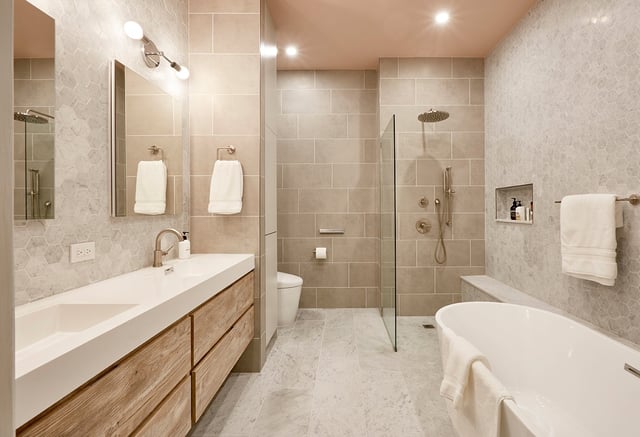
In This Article
A bathroom remodel is one of the smartest—and most rewarding—upgrades you can make, instantly boosting your space’s comfort, style, and value. If you have a 5x7 bathroom, you’re in luck: this popular layout is the perfect size to create a stunning retreat without breaking the bank. But before you start picking out tiles and fixtures, it’s essential to know what to expect. In this guide, we’ll reveal exactly how much it costs to remodel a 5x7 bathroom, breaking down expenses like labor, materials, and other major factors. Best of all, we’ll share insider tips to help you save money while achieving the bathroom of your dreams.
The average cost of remodeling a 5x7 bathroom varies depending on the project’s complexity, location, material choices, and contractor rates. Here’s a general breakdown:
Low-End Remodel: $3,500 to $7,000
Suitable for cosmetic updates, such as new paint, fixtures, and minor hardware replacements.
Mid-Range Remodel: $7,500 to $15,000
Involves upgrading tiles, plumbing, fixtures, and cabinetry while maintaining the existing layout.
High-End Remodel: $15,000 to $30,000 or more
Includes luxury materials, custom cabinetry, high-end fixtures, and layout changes.
Let’s dive deeper into where your money goes in a typical remodel and how to prioritize expenses.
Labor costs account for a large portion of the budget, depending on the project’s complexity and the contractor’s rates. The specific demands of your renovation will also impact your overall labor costs, as different professionals—such as plumbers, electricians, and general contractors—each charge different hourly rates. For example, a plumber typically charges about $90 per hour. General contractors can charge anywhere from $50 to $150 per hour, and most work on a contract or project basis, with labor fees representing an estimated 10–20% of the total bathroom remodeling budget. If you hire an interior designer—such as those from Block—expect to pay around $200 per hour.
Compare Proposals with Ease

Before any construction begins, the old materials and fixtures need to be removed. Costs depend on the extent of demolition and whether any structural issues are encountered. For instance, a simple cosmetic update may only require removing a few fixtures, while a full gut renovation will involve much more debris disposal. If your bathroom is located on an upper floor or in a hard-to-access area, expect higher costs due to the added labor.
Another key factor is the condition of your existing bathroom. If contractors encounter hidden issues such as mold, asbestos, or water damage during demolition, additional work and safety precautions will be necessary, which can quickly increase costs. Proper disposal of old materials is also included in most demolition quotes, but hazardous materials may require specialized removal and add to the overall expense.
If your remodel includes relocating fixtures or upgrading pipes and electrical wiring, this can be a significant cost factor.
Plumbing work often involves moving or replacing water supply lines, drains, and vent pipes to accommodate new layouts for sinks, toilets, showers, or bathtubs. The more extensive the changes—such as moving a toilet across the 5x7 room or adding a double vanity—the higher the cost, as this requires more labor and materials.
Electrical upgrades are also common in bathroom remodels, especially if you’re adding new lighting, outlets, or modern features like heated floors, smart mirrors, or ventilation fans. Older homes may require a complete rewiring to meet current safety codes, which can add to the expense. Installing GFCI (ground-fault circuit interrupter) outlets, required by code in bathrooms, is another important consideration.
Common choices include ceramic tiles, vinyl, or porcelain, with the cost varying based on material and labor. Floor-related labor costs can increase if your 5x7 bathroom has unique features such as a built-in shower bench or requires intricate tile patterns. Additional expenses may arise if the old flooring needs to be removed or if the subfloor requires repairs due to water damage or uneven surfaces.
Waterproofing and mold-resistant drywall, along with a fresh coat of paint, are essential in a bathroom remodel. This cost includes installing mold-resistant drywall, such as green board or cement board, which is more expensive than standard drywall but essential for areas exposed to moisture, like showers and tubs. Additional expenses may come from applying waterproofing membranes to protect against water damage.
Pre-made vanities are the most budget-friendly option, starting around $300 to $800, but prices increase with larger sizes, double sinks, or premium finishes. Custom-built vanities offer more flexibility in design and materials but can cost $2,000 or more, especially if you choose high-end wood or specialty features like soft-close drawers and integrated lighting.
Countertop materials also have a significant impact on the overall price. Laminate is the most affordable, but most homeowners opt for more durable and attractive surfaces like granite, quartz, or marble. Granite and quartz countertops generally range from $50 to $150 per square foot installed, while marble is at the higher end of the spectrum. The final cost will also include installation and any necessary plumbing adjustments, so it’s important to factor in both material and labor when budgeting for this part of your remodel.
Basic models of bathroom fixtures are available at the lower end of the price range, with standard toilets and sinks starting around $100 to $300 each, and basic bathtubs or shower inserts ranging from $300 to $800.
Upgrading to water-efficient or designer fixtures will increase costs. High-efficiency toilets and faucets, for example, can cost $300 to $600 each, while luxury or custom showers and freestanding tubs may run $1,500 or more. Additional features, such as rainfall showerheads, body jets, or smart toilets with bidet functions, can further drive up the price. Labor costs should also be considered, as complex plumbing or custom configurations may require more time from your contractor.
Bring Your Dream Bathroom to Life

The total expense for your 5x7 bathroom depends on the type of tile you choose, the size of the area to be covered, and the complexity of the installation. Standard ceramic or porcelain tiles are generally more affordable, while natural stone, glass, or designer tiles can significantly increase material costs.
Labor is a major cost factor in tile work, as precise installation is required to ensure a watertight and visually appealing finish. Intricate patterns, custom borders, or mosaic accents will add to both labor and material costs. In a 5x7 bathroom, tiling the shower enclosure and extending tile partway or all the way up the walls can quickly become one of the most significant investments in your remodel.
The total cost depends on the number and type of fixtures you choose, as well as the complexity of the installation. Basic overhead lights and standard exhaust fans are available at the lower end of the price range, while adding features like recessed lighting, LED mirrors, or designer fixtures will increase expenses.
In a compact 5x7 bathroom, effective ventilation is especially important to prevent moisture buildup and mold growth in the limited space. Investing in a high-quality exhaust fan with features like humidity sensors or quiet operation can be particularly worthwhile, as these options offer better performance and energy efficiency for smaller bathrooms.

Material Selection: The materials you choose significantly impact the overall cost. For example, ceramic tiles are more affordable than marble, and pre-fabricated vanities are cheaper than custom-built ones.
Location: Remodeling costs can vary by region due to differences in labor rates and material availability. For example, a bathroom remodel in NYC is typically more expensive than in smaller cities.
Scope of the Project: Simple cosmetic updates are more affordable than full renovations involving plumbing, electrical, and structural changes.
Design Complexity: Customized layouts and intricate designs often require more labor, which can drive up costs.
Plumbing and Electrical Changes: Moving or upgrading plumbing and electrical systems can significantly add to your expenses.
Maintain the Existing Layout: Keeping the sink, toilet, and shower in their current positions can save you thousands of dollars by avoiding extensive plumbing work.
Opt for Prefabricated Products: Pre-made vanities, shower kits, and countertops are more affordable than custom options without compromising on style.
Refinish Instead of Replace: Consider refinishing your bathtub or tiles instead of replacing them to save on material and labor costs.
Shop Smart: Look for sales, discounts, and clearance items for fixtures and materials. Consider online marketplaces or local suppliers for affordable options.
Water Damage and Mold Remediation: Unforeseen issues like water damage or mold growth behind walls can increase costs unexpectedly. Always allocate a contingency budget.
Permits and Inspection Fees: Depending on your location, you may need permits for electrical, plumbing, or structural changes.
Upgrading to Code Compliance: Older homes may require upgrades to meet current building codes, such as GFCI outlets and proper ventilation.
Delivery and Disposal Fees: Include costs for delivering materials and disposing of construction debris in your budget.

DIY:
Best for tasks like painting, installing fixtures, or minor demolition.
Potential savings: $1,000 to $5,000 depending on the scope.
Hiring a Contractor:
Recommended for plumbing, electrical, and structural work.
Benefits include professional expertise, faster completion, and adherence to building codes.
Hybrid Approach:
Many homeowners opt for a combination of DIY and professional help to balance savings and quality.
A bathroom remodel typically takes 2 to 6 weeks, depending on the scope of work:
Planning and Design: 1 to 2 weeks
Demolition: 2 to 5 days
Plumbing and Electrical Work: 1 to 2 weeks
Installation of Fixtures and Finishes: 1 to 2 weeks
Final Touches and Cleanup: 1 to 3 days
Increased Home Value
Remodeling your bathroom can offer a return on investment (ROI) of 60% to 70%, making it a worthwhile investment.
Enhanced Functionality
Modern layouts and fixtures can improve storage, water efficiency, and overall comfort.
Energy and Water Efficiency
Upgrading to energy-efficient lighting and water-saving fixtures can reduce utility bills.
Aesthetic Appeal
A beautifully remodeled bathroom can provide a spa-like retreat within your home.
A 5x7 bathroom remodel offers an excellent opportunity to enhance both functionality and aesthetics while increasing the value of your home. By understanding the associated costs and planning carefully, you can achieve the bathroom of your dreams within your budget. Whether you choose a simple refresh or a luxury upgrade, your investment will pay off in comfort and style. Block can help you achieve your renovation goals and bring your dream remodel to life with price assurance and expert support. Get Started today!

Written by Block Renovation
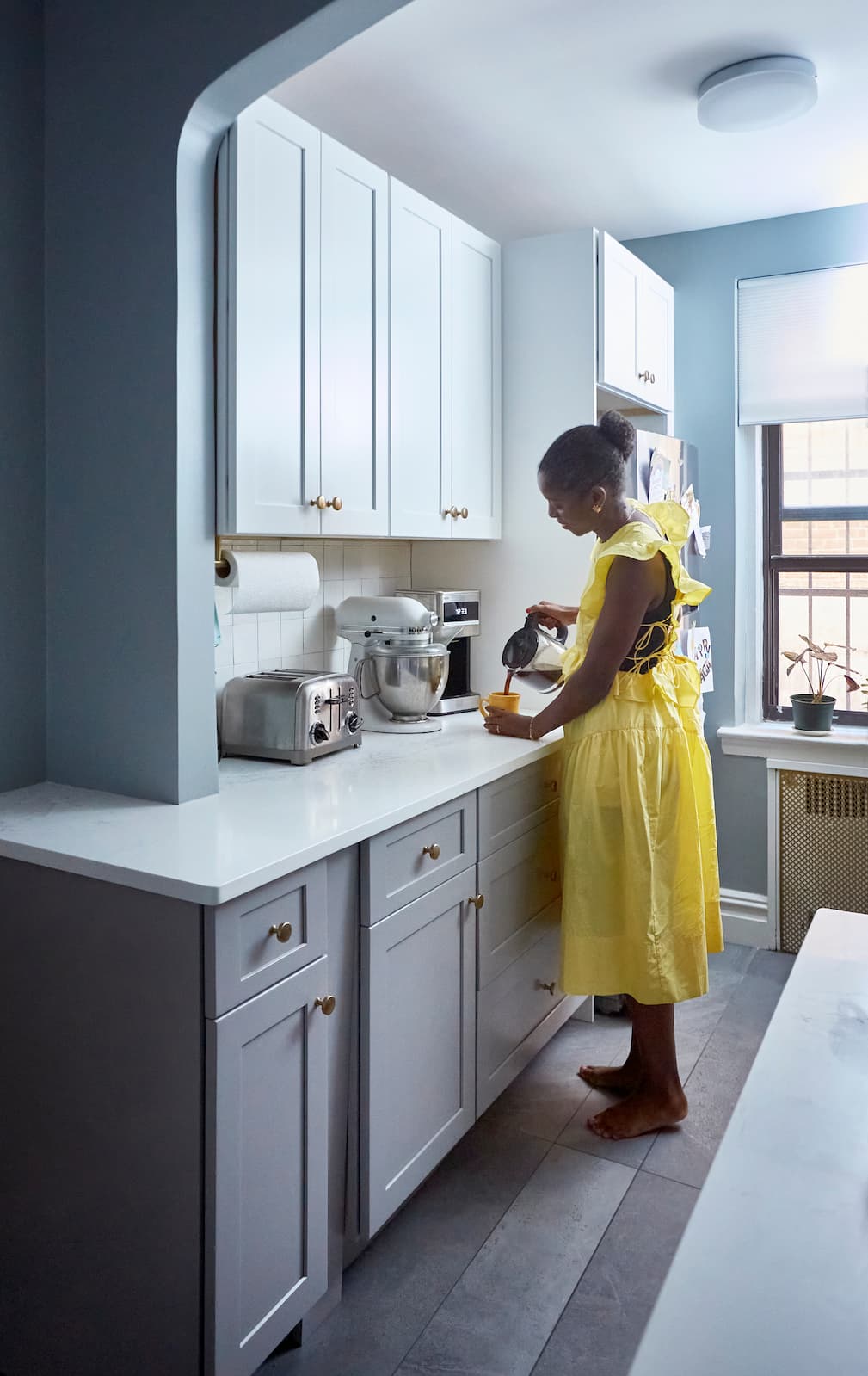
Renovate confidently with Block
Easily compare quotes from top quality contractors, and get peace of mind with warranty & price protections.
Thousands of homeowners have renovated with Block

4.5 Stars (100+)

4.7 Stars (100+)

4.5 Stars (75+)

Bathroom
Slanted Roof Bathrooms and Shower Design Ideas
11.22.2025

Bathroom
Choosing Bathroom Fixture Finishes - Inspiration & FAQ
10.22.2025
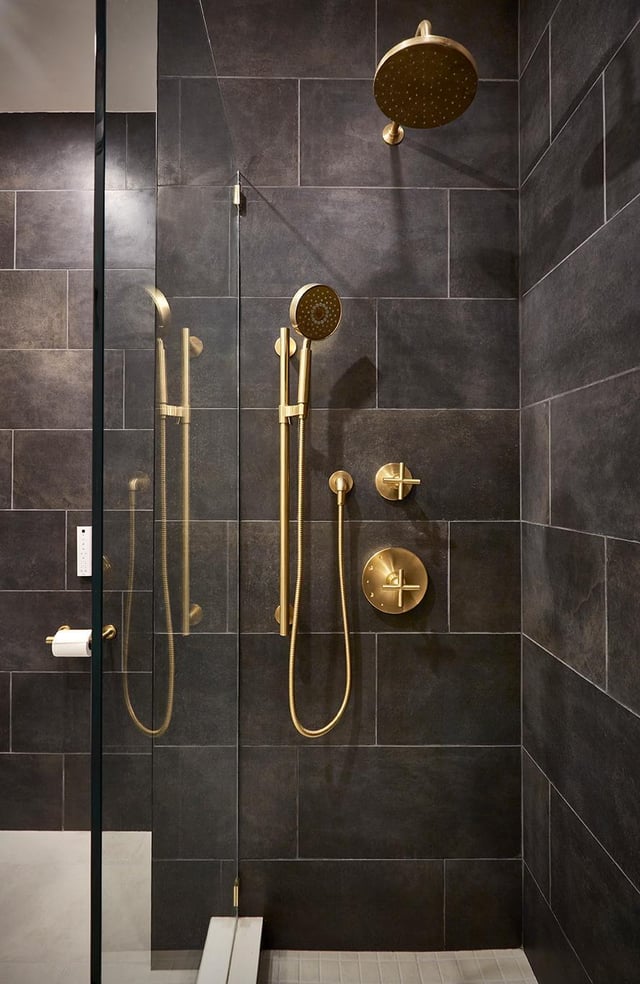
Bathroom
Designing a 40-Square Foot Bathroom? Here’s What Actually Matters
10.22.2025
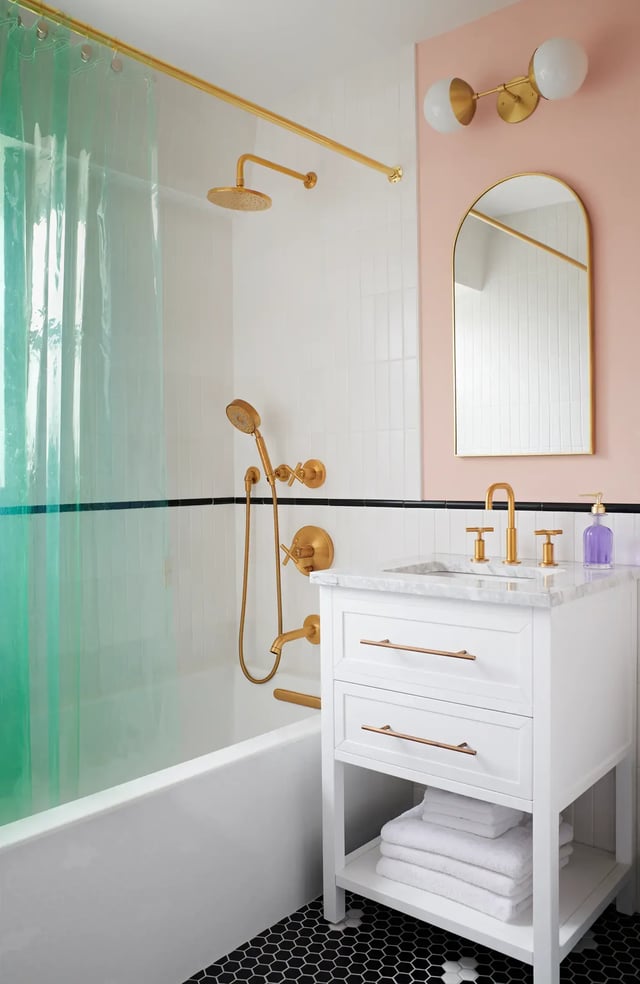
Bathroom
Different Types of Bathroom Sinks
10.22.2025
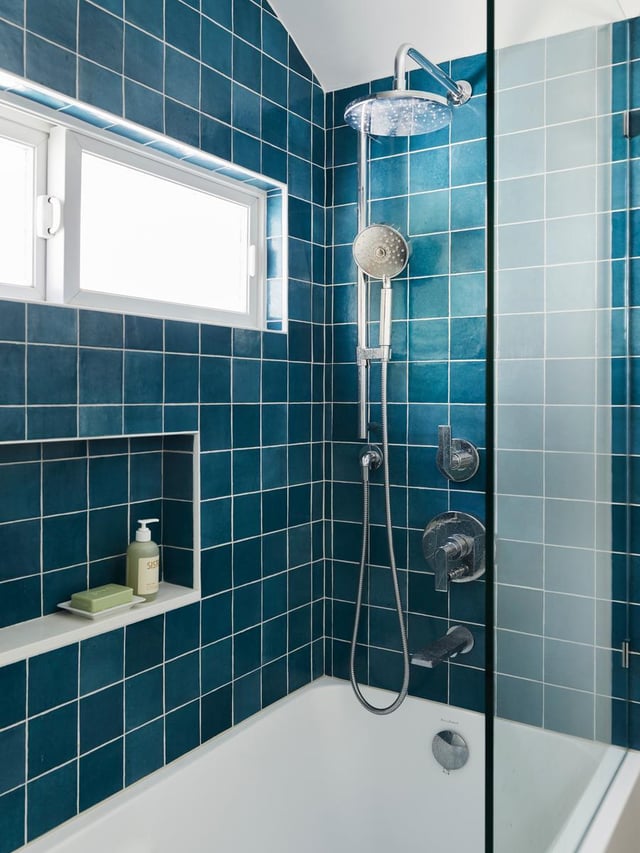
Bathroom
Showers with Windows to Inspire Your Bathroom Design
10.22.2025
Renovate confidently